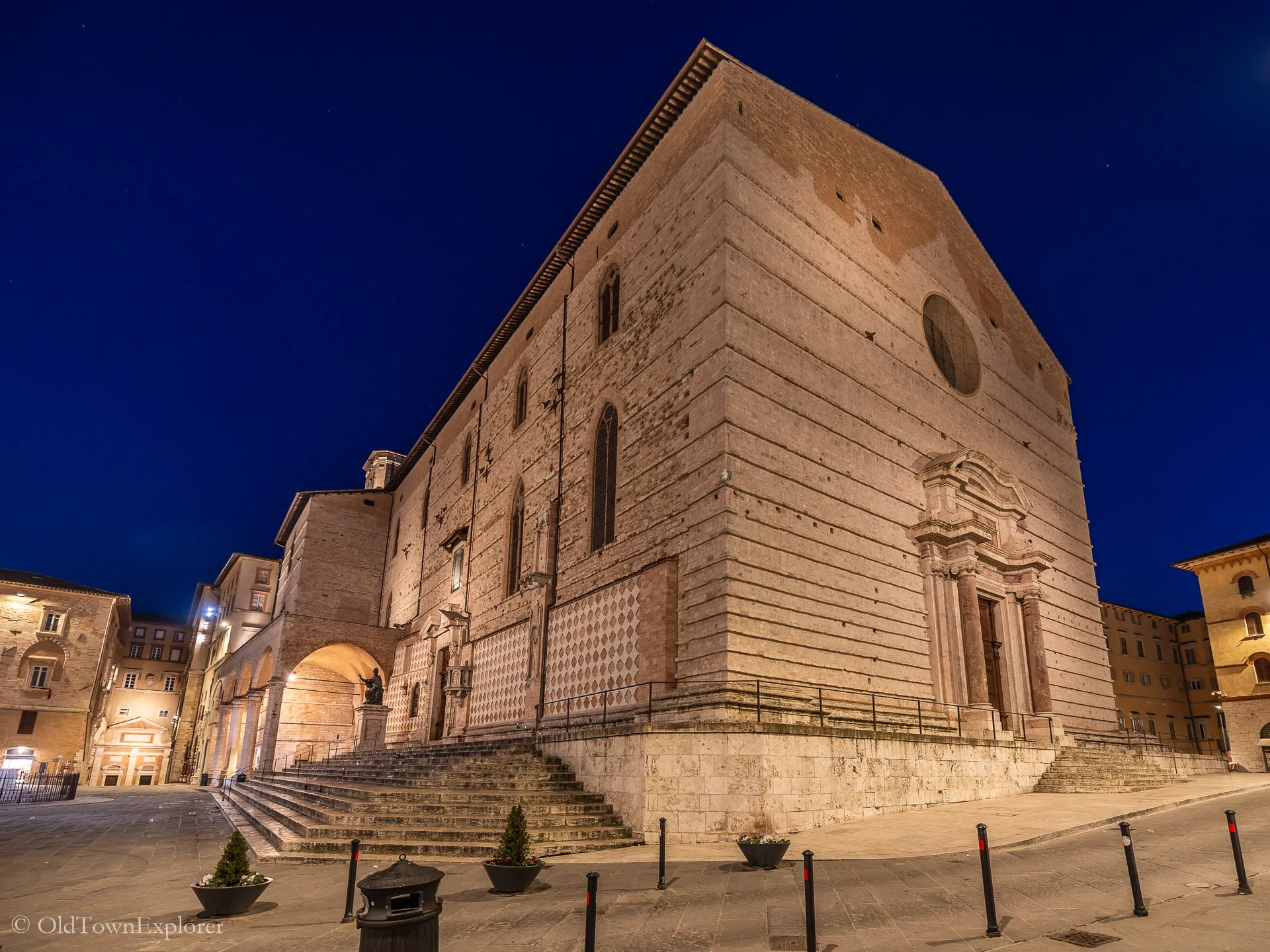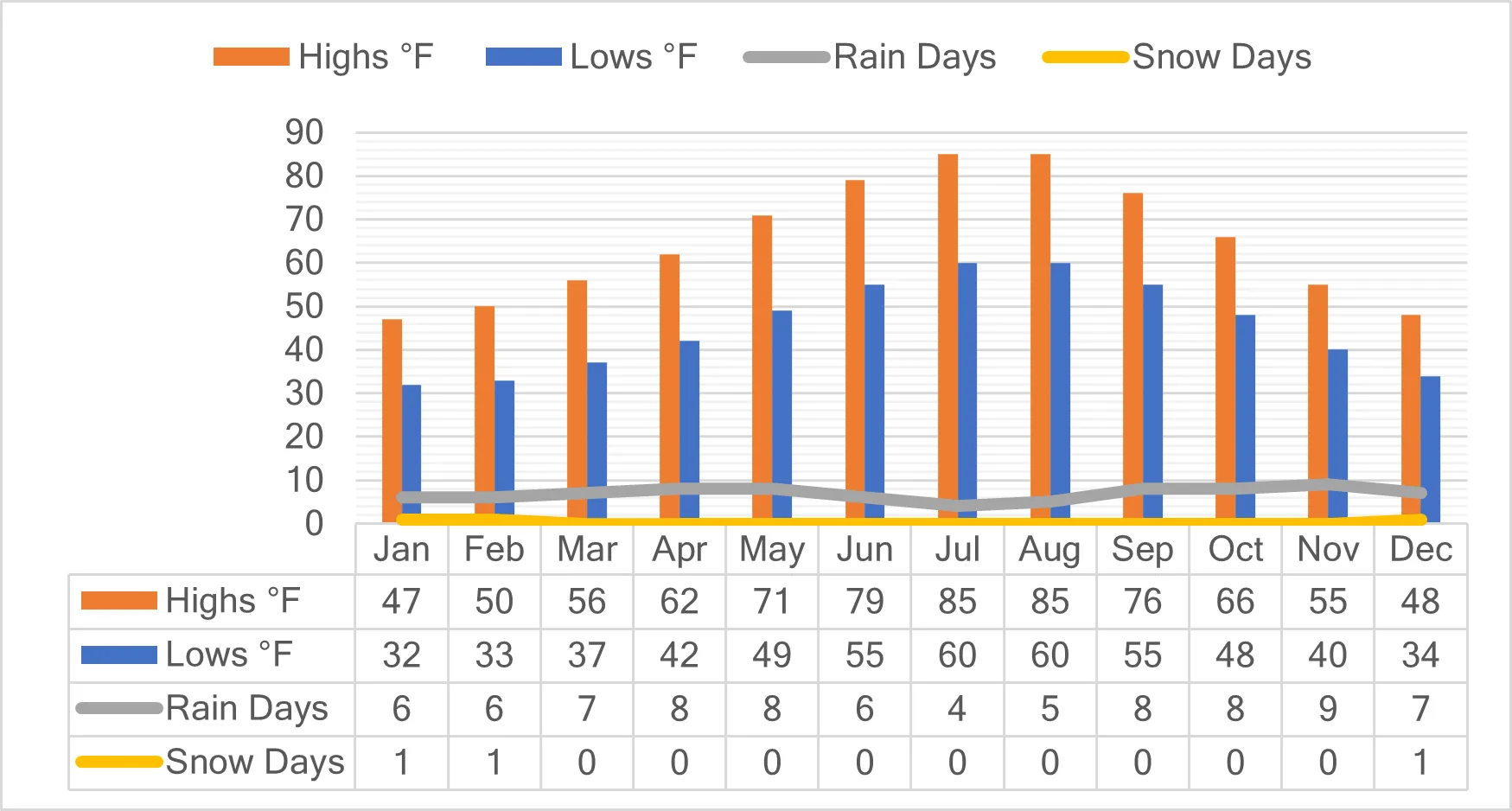Perugia
Food | Wine | ArchitectureExplore Perugia: Food, Wine & Architecture
Set atop a series of rolling hills in Italy’s Umbria region, Perugia is a city where medieval architecture, traditional cuisine, and a vibrant cultural scene come together. Known for its historic city walls, Gothic palaces, and lively piazzas, Perugia offers a rich blend of artistic heritage and everyday Umbrian life.
From local trattorias serving hand-rolled pastas and wild boar ragù to wine bars pouring Sagrantino and Grechetto, Perugia’s food and wine culture reflects the region’s deep agricultural roots. As you explore its cobblestone streets and ancient Etruscan arches, you’ll discover a city where history and tradition remain part of daily life.
We spent the entire month of April in Perugia exploring the city’s traditional food, local wine, and historical architecture. Below is a summary of the information we discovered, plus some additional travel tips and resources we picked up along the way. We hope this information will inspire you to plan your next trip!
This website contains affiliate links that may earn us a small commission at no additional cost to you.
Perugia Food
Perugia’s culinary scene is a delight for food enthusiasts with its rich flavors and authentic Italian dishes. From hearty pastas to delectable desserts, the city’s eateries offer a true taste of Umbrian cuisine.
Indulge in traditional dishes such as porchetta, a succulent roasted pork delicacy that melts in your mouth, or savor the rustic simplicity of torta al testo, a flatbread stuffed with savory fillings.
Dining in Perugia is not just a meal; it’s an experience that will leave your taste buds longing for more. Don’t miss the opportunity to savor the flavors of Perugia during your visit to this charming Italian city.

Perugia Wine
Nestled in the heart of Italy, Perugia is a paradise for wine connoisseurs. The region boasts a rich winemaking tradition that dates back centuries, producing a variety of exceptional wines. From full-bodied reds to crisp whites, Perugia offers an array of options to suit every palate.
Immerse yourself in the local wine culture by visiting vineyards and wine cellars, where you can sample some of Umbria’s finest wines and learn about the winemaking process firsthand.

Perugia Architecture
Perugia’s architecture is a testament to its rich history and cultural heritage. Perugia’s city walls, dating back to ancient times, offer a glimpse into the city’s rich history and provide a unique experience for visitors exploring its compact and walkable historic center.
The city is adorned with stunning medieval buildings, historic churches, and ancient Etruscan ruins that offer a glimpse into its past. Explore the iconic Palazzo dei Priori, a majestic Gothic palace that houses valuable artworks and serves as a symbol of Perugia’s civic pride.
Stroll through the charming streets lined with Renaissance palaces and picturesque piazzas, each telling a story of the city’s evolution over the centuries.

Where Is Perugia Located?
Perugia, located in the heart of Italy’s central hinterland at the peninsula’s broadest section, stands as the largest city between Florence and Rome.
It is strategically positioned roughly 100 kilometers from Florence, 150 kilometers from Rome, and 400 kilometers from Ancona, Milan, Genoa, and Naples.
What Is The Best Time To Visit Perugia?
The best month to visit Perugia depends on what you’re looking for. Do you want the best weather, fewer crowds, or the best value? Following are our suggestions for each.
Weather
The best weather is a personal preference. We find the best weather for exploring a city is around 55° F and sunny. The weather in Perugia during the summer can be very hot, so plan accordingly if you’re visiting in July or August.
Below is a chart showing the average high and low temperatures for each month so you can decide what is best for you.

Shoulder Season
The time of the year with good weather and fewer crowds is often called the shoulder season. The shoulder season in Perugia is April to June and September to October. For many, this is the best time of the year to visit. We spent the entire month of April in Perugia. The weather was cool but rainy. Events and festivals were happening on most weekends, and the city was very lively. But, it was not overcrowded.
Best Value
November and March are good months to visit Perugia for the best value and with fewer crowds. The weather during these months is cool in Perugia and similar to our preferred temperature for walking most of the day.
Best Places to Stay in Perugia
Hotels in Perugia
There are many great places to stay in Perugia. For the best experience, we recommend staying near Piazza IV Novembre (the castle marker on the map below). The area around Piazza IV Novembre is the most pedestrian-friendly, surrounded by restaurants and historical shops.
Here’s a map with hotel and apartment options that can be filtered to meet your needs. Select your travel dates to get specific availability and prices.
Book your stay now!
Other Things to Know About Perugia
Airport
The closest airport to Perugia is Perugia San Francesco d’Assisi – Umbria International Airport (PEG), located 9.3 km away. Other nearby airports include Florence (FLR) at 122.8 km and Rome (FCO) at 146.9 km.
Train Station
Perugia railway station, also referred to as Perugia Fontivegge railway station, is the primary station serving the city and municipality of Perugia in the Umbria region of central Italy.
Time Zone
Central European Standard Time (GMT +1)
Currency
Euro €
Language
Italian – Perugia is a city where English is abundantly spoken.
Visa
Citizens from the United States, United Kingdom, Canada, and Australia don’t need a visa to visit Italy if they stay 90 days or less. For more information on visa-free travel in Italy, check out our article on traveling visa-free.
Electricity
Italy’s electrical outlets are Type C, F, and L. They have a 230V supply voltage and 50Hz. Travelers from the United States will need an adapter.
If you have many items to plug in, we recommend a travel power strip with multiple USBs and standard plug-ins. Using a power strip, you will only need one adapter to plug the strip into the wall.
SIM Card
Travelers will want a SIM card for Italy. You can get either a local SIM card or an eSIM card.
To get a local SIM card, you have to find a local cellular service provider, often stand in line for assistance, show your passport, and complete some paperwork. The SIM cards work great, but purchasing them is somewhat inconvenient. This option is best if you need more than 5GB of data.
We use eSIMs exclusively because they can be purchased through an app prior to arrival in a new country and activated when you hit a cell tower in the country. We use Airalo eSIMs. They work great, and I recommend them if you plan to use less than 5 GB of data during your stay or if you need internet immediately on arrival.
Car Rental
The fantastic train system in Italy makes rental cars unnecessary for most destinations. However, rental cars are needed to reach smaller towns and explore the countryside. In addition to the major car rental companies found in the United States, Sixt and Europcar are common throughout Europe. For a comparison of rental car offers from large, international brands and smaller regional brands, we recommend Discover Cars.
FAQs About Perugia
Is Perugia, Italy worth visiting?
Absolutely! Perugia, Italy, is undoubtedly worth a visit. This beautiful city in the heart of Umbria offers so much, from its rich history and charming medieval architecture to its vibrant cultural scene and delicious local cuisine. Explore the historic center with its narrow streets, breathtaking views, and impressive art galleries. Don’t miss the chance to visit the famous Perugina chocolate factory or attend the renowned Umbria Jazz Festival if you’re there at the right time. Whether you’re a history buff, a foodie, an art lover, or just seeking a relaxing getaway, Perugia has something for everyone to enjoy.
How many days do you need in Perugia?
The number of days you need in Perugia depends on your travel preferences and the activities you plan to do. Generally, spending 2 to 3 days in Perugia allows you to explore the main attractions, enjoy the local cuisine, and immerse yourself in the city’s culture. This timeframe gives you enough time to visit places like Piazza IV Novembre, Palazzo dei Priori, Rocca Paolina, and indulge in delicious Italian food. However, if you want to take things at a slower pace or explore more off-the-beaten-path locations, extending your stay to 4 to 5 days could be ideal. Ultimately, it’s about finding the right balance between seeing what interests you most and savoring the charm of this beautiful city.
What is Perugia best known for?
Perugia is best known as the capital of the Umbria region in central Italy. It is celebrated for its historical architecture, medieval streets, and well-preserved Etruscan walls. Perugia is also famous for its chocolate production, particularly highlighted by the annual Eurochocolate festival that occurs in the city, drawing visitors from around the globe. Furthermore, Perugia is home to the University of Perugia, one of the oldest universities in Italy, contributing to its cultural and educational importance.
What are the two things Perugia is famous for?
Perugia is known for two main attractions: its delicious chocolate, particularly the Baci Perugina (chocolate “kisses” filled with hazelnuts), and its status as home to one of Italy’s oldest universities, the University of Perugia.
Perugia Blog Posts
No Results Found
The page you requested could not be found. Try refining your search, or use the navigation above to locate the post.
